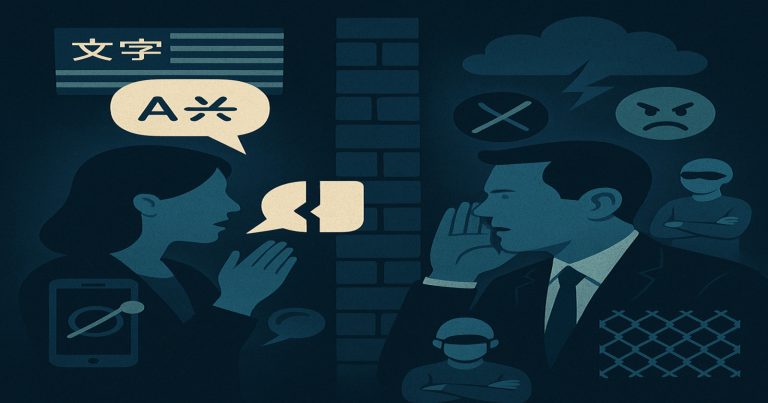Barriers exist in the communication channels, preventing communication from being effective. There are physical barriers such as emotional, cultural, and psychological hindrances that have led to reach misunderstandings and misinterpretations. These may arise from factors such as differences in languages, poor listening skills, and the physical environment. A communication barrier refers to any barrier that really affects the meant transfer of information between two or many people. Good communication can be personal, in business negotiations, organization, or cross-cultural. However, it can be disrupted by emotional, physical, linguistic, and cultural barriers, leading to misunderstanding, conflict, or inefficiency. The first step in building stronger communication skills-for which inherent need may never be rare in any dimension of life-is to recognize these barriers.
What are Common Barriers to Effective Communication?
Although barriers may spring from various sources. Like personal, environmental, semantic, and organizational. They serve as disruptive agents while transference of message proceeds. In the absence of handling these barriers, they break down into confusion and misinterpretation. Which in turn damages ties. Knowing such communication barriers gives individuals and organizations insight into formulating strategies. This is helpful to achieve more productive, clear, and empathetic communication. The types of barriers to communication are as follows:
Physical Barriers
Physical barriers constitute surroundings like noise, distance, structural barriers, and inadequate lighting. It essentially impedes the whole process of communication. For instance, inadequacies. Be it poor physical environment or a lousy internet connection, convening the meeting. It may readily give rise to miscommunication and skew this clarity of the message.
Emotional Barriers
Emotional barriers arise when the persons involved are experiencing strong emotions-stress. Like anger, or fear-that make meaningful dialogue impossible. Strong emotional reactions trigger a defensive stance . Or may turn to withdrawal that inhibits the perception and conveyance of information.
Cultural Barriers
Cultural barriers are the result of differing customs and values. Different traditions, and communication etiquette among disparate people. Such differences can result in misinterpretations. Epecially, when a gesture or form of communication is markedly different between two cultures.
Psychological Barriers
Psychological barriers include individual prejudices, stereotypes, biases, and trust issues . It creates impediments to open dialogue. Rigid convictions or mutual distrust among communicators act as obstructions. Any attempt to send or receive any messages without distortion is not possible in this case.
Language Barriers
Language barriers exist when persons speak different languages. Or when they use uncommon jargon. Variance in linguistic capability is another reason. Within one language, regional slang or industry jargon can lead to confusion.
Technological Barriers
Technological barriers arise from malfunctioning devices, poor internet connections. Or even unfamiliarity with the communication technologies being used. An example is a video conference that continuously disconnects due to poor connectivity. It is disrupting the flow of clear communication.
Organizational Barriers
Formal hierarchies of organizations, unclear communication channels, and bureaucratic delays lead to organizational barriers. Once messages find their way through a multitude of avenues, distortions or even loss shall occur.
Semantic Barriers
Semantic barriers stand for the lack of communication in meaning and interpretation of words. Even in acse of phrases or symbols. Every time a message is sent, misunderstandings arise if sender and receiver consider different meanings to the same terms. Often because the two parties belong to different language groups or context. This is a barrier to effective communication.
Non-Verbal Barriers
Nonverbal barriers arise when abuse of body language, gesture, or facial expression lends a contradicting force. To what was said, leading to confusion. A mismatch between verbal context and nonverbal cues. It also forms barriers to effective communication. The barriers include the physical, emotional, cultural, psychological, language, technological, organizational, semantic, and nonverbal categories.
Examples of Communication Barriers
Barriers exist in the communication channels, preventing communication from being effective. There are physical barriers such as emotional, cultural, and psychological hindrances that have led to misunderstandings and misinterpretations. Understanding real-world examples helps solidify how barriers operate in practice:
- Technical Jargon Misunderstood: A software engineer using heavy technical terms during a client meeting, leaving the client confused and disengaged.
- Emotionally Distracted Listener: A team member stressed about personal issues failing to comprehend important project updates during a meeting.
- Cultural Gesture Misinterpreted: A handshake offered too aggressively is interpreted as rude by someone from a more reserved culture.
- Noise Blocking a Message: Construction noise outside a meeting room preventing participants from clearly hearing each other.
- Psychological Bias Affecting Communication: A manager ignoring valuable input from a junior employee due to biases about age or experience.
How Can Language Be a Barrier in Communication?
Language barriers occur when people do not share a common language or have varying levels of proficiency, causing difficulty in understanding each other’s messages. Even among speakers of the same language, dialects, accents, technical jargon, and ambiguous expressions can cause confusion. Communication becomes effective only when both parties clearly understand the vocabulary, grammar, and intended meaning behind the message.
Lack of a Common Language
Without any common language, understanding just becomes quite difficult even with the help of interpreters. Nuances, emotions, and subtleties are often lost in translation, making it difficult for proper comprehension and communication.
Difference in Vocabulary
Every type of profession used in the industry has a specialized vocabulary of its own, which cannot be deciphered by outsiders. Mismatched vocabulary also causes the listener to misinterpret or miss the whole message altogether.
Accents and Pronunciation
Accents and regional variations in pronunciation can distort spoken communication. Strong accents might make simple words hard to understand, particularly in global teams where English is a second language.
Ambiguity in Language
Words with multiple meanings or vague phrases can lead to uncertainty. The word “charge,” for example, can mean money owed, an accusation, or even electrical energy, depending on the context.
Cultural Differences in Language Use
Language reflects cultural nuances such as formality, indirectness, or humor. Misunderstandings can occur when one culture uses very subtle hints while another expects direct communication.
What Are Some Strategies to Overcome Communication Barriers?
Effective communication consists of intentional acts to identify barriers and address those effectively in a manner that ensures clarity, mutual understanding, and trust among the communicators. Barriers in communication can be overcome through awareness, patience, and viable strategies to deal with particular challenges. Sometimes just knowing that a blockage exists allows one to take steps to minimize it toward what would be a more productive conversation.
Realize Your Emotions
Try to defuse such emotions as stress or anger before the actual interaction. Being calm can help your interlocutor better understand what you are trying to get across and lead to better, more constructive conversations.
Stick to the Topic
Use plain, direct talk, which does not employ much jargon, slang, or technical terms to minimize confusion. Make sure people understand exactly what you are saying.
Understand Cultural Differences
Knowing how to communicate better across diverse cultural systems will elicit respect and avoid misunderstandings. Such sensitivities will therefore encourage better global compatibility.
Do Active Listening
Active listening implies giving undivided attention to the speaker, listening without interruption, and posing questions for clarification where required and confirming comprehension with feedback; it implies two-way communication whereby both sides feel respect.
Be Consistent With Your Verbal Behavior
Body language, facial expressions, and tone should complement spoken words in a way that avoids any contradictory signals that may compromise the delivery of the message. Fine-tuning your non-verbal communication will ensure that your messaging is perceived as you intended it to be.
Foster Positive and Inclusive Environments
Fostering an open culture of communication where respect matters will encourage honest communications between parties. It becomes a safe place where everyone contributes and supports trust.
Use Technology Efficiently
When tools for communication are functional and users are trained in their operational use, communication certainly flows better, especially in a remote or virtual environment.
Invite Feedback
Inviting feedback is a way to find out how well your message has been received. It shows that you are receptive to feedback from the other person and value his or her point of view enough to make changes.
What Role Does Culture Play in Communication Barriers?
Culture determines how people express themselves orally and the use of non-verbal communication, as well as the emotional attributes they show. The insensitivity about how gestures are different, attitudes taken towards issues, and styles of communication can easily result in misunderstanding between cultures. Cultural competency has become a crucial skill today in a more globally-associated world, as really only through effective interaction across cultures may end up successful communication and building up relationships.
Non-Verbal Communication
Different cultures interpret gestures, facial expressions, and body language differently. For example, a thumbs-up may be a positive sign in the U.S. but offensive in parts of the Middle East.
Contextual Communication Styles
High-context cultures rely heavily on non-verbal cues and implied meanings, whereas low-context cultures prefer direct, explicit verbal communication. Misunderstandings occur when communicators from these cultures interact without understanding the style differences.
Language and Dialects
Regional language differences, idioms, and slang create barriers even among people speaking the same language. Being cautious about using localized phrases ensures clearer global communication.
Perception of Time and Space
Attitudes toward punctuality, deadlines, and personal space differ across cultures. Awareness of these differences helps avoid unintentional disrespect and fosters stronger professional relationships.
Barriers in Communication FAQs
Q1: What is the most common barrier to communication?
The most common communication barrier is semantic misunderstanding, where words or phrases are misinterpreted due to differences in meaning, jargon, or unclear language.
Q2: How can you reduce barriers to communication?
Barriers can be reduced by using clear and simple language, practicing active listening, being emotionally and culturally aware, and encouraging open feedback.
Q3: What are the effects of barriers to communication?
Barriers can lead to misunderstandings, decreased productivity, emotional conflict, poor relationships, and failures in achieving goals both professionally and personally.
Q4: What are the barriers to good communication results?
Barriers include physical noise, emotional stress, language differences, cultural misunderstandings, poor technology, and organizational inefficiencies that hinder message clarity.
Q5: Why is overcoming communication barriers important?
Overcoming barriers ensures clarity, builds stronger relationships, increases efficiency, and reduces conflicts — all of which are vital in both professional and personal environments.

